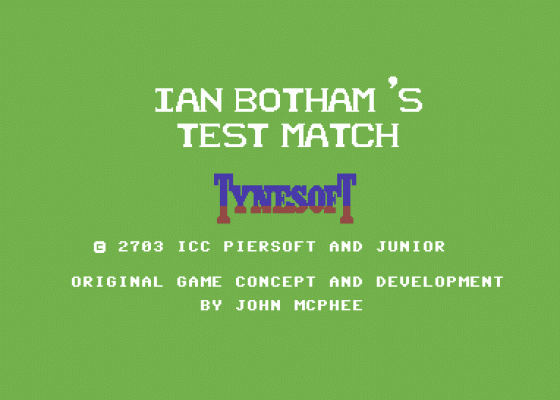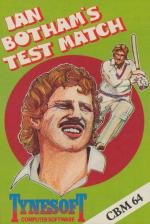
Computer Gamer
 1st August 1985
1st August 1985
Ian Botham's Test Match
If you have ever wanted to bowl a maiden over, then Tynesoft have provided the answer for you. No, it's not a computer dating service but a rather good cricket simulation.
The documentation is very well planned and could be used as a primer on the finer points of the real game, which is an indication of the flexibility of the program itself. The game even allows you to name your own terms thus ensuring that your game can move with the times or even go back to days gone by. Just as well really because Ian Botham's name doesn't appear to be included!
There are three game types to select from: a limited game of sixteen overs per side, one day match of 32 overs, and the Test Match itself which is a full blown unlimited overs, two innings match.

Having selected the match type the two players decide who will bat first and the other player places his fielders around the pitch. Once the fielders are posted in their 'home' positions they may not be moved until the end of an over, except to recover a ball. The view of the field is like the normal TV scene, looking from the bowler's wicket.
The bowler type is now chosen (fast, medium, spin or bouncer) and the game can commence. This is where I got my first disappointment, when the fire button is pressed to make the batsman strike, no perceivable action occurs. The ball either moves away for a hit or disappears but the man never moves a muscle. This makes it difficult to time your stroke and I would have preferred a bit of action.
Fielding requires that you anticipate the shot to be played and select an appropriate fielder who can then be moved to intercept the ball. If you make the wrong selection then there is a very good chance that the ball will reach the boundary.
Another little grumble at this point, the positioning of the bowler must be precise to stop the ball. With a little bit of extra programming it should have been possible to do two things.
Firstly, because selection of the fielder is a hit and miss affair, a proximity test to increase the chance of collecting the ball would lessen the fielder's frustration and only use precise positioning for detecting a catch.
Secondly, it would improve the game a little if the ball stopped when it struck any fielder even if this meant that the 'selected' fielder had to dash across to collect the ball while the batsmen cashed in on this chance to knock up a few runs.
However, these little niggles do not spoil my overall impression of the game which has enough flexibility in bowling and batting styles to maintain interest.
A few random factors, based on cricketing statistics, are used to determine extras and not out decisions plus the occasional stroke off the edge of the bat.
In an Australian TV style, a batsman bowled out for a duck is signified by Doodles the Duck who waddles across the bottom of the screen, stopping only to shed a tear.
Tis rumoured that the original title of this game was to be Botham's Ashes, no doubt in the light of the recent Court case the makers decided that the title may be "ambiguous" and so Ian Botham's Test Match it is... and it's good enough for me.



